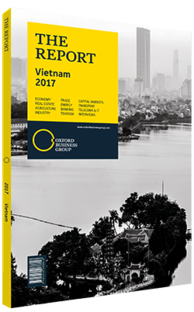Vietnam-EU trade agreement to be signed in 2018
The EU is one of Vietnam’s biggest trading partners, accounting for nearly a one-fifth of the country’s exports. Hanoi established diplomatic and commercial relations with the bloc in 1990, not long after the beginning of the Doi Moi economic and political reforms. This was followed by a cooperation agreement in 1995 which gave Vietnam most-favoured-nation status.
Key Partner
Vietnam’s trade with the EU in the first 11 months of 2016 totalled $40.76bn, according to Vietnam Customs. The bloc was Vietnam’s second-biggest export market, worth $30.72bn (up 9% on the same period of 2015, and accounting for 19.2% of the total), and its fourth-biggest source of imports ($10bn, up 9.7%, and 6.4% of the total). Machinery and appliances accounted for just over half of Vietnam’s exports to the EU, 50.1%, with telecommunications equipment comprising 33.5% of all exports. Footwear and hats accounted for 12.1%, and textiles and textile articles 10.4%. Vietnam’s imports from the EU, meanwhile, included machinery and appliances (27.4% of the total), chemicals (17.8%) and manufactured goods (11.3%).
Evtfta
Now the relationship is set to become even deeper, with the wide-ranging EU-Vietnam Free Trade Agreement (EVFTA) on track to be signed in 2018. The FTA will eliminate more than 99% of tariff lines, and partially liberalise the remaining number, in some cases through quota increases. Vietnam will eliminate 65% of its import duties on EU products before or on the date of the FTA entering into force, with the remainder lifted over the following 10 years. The EU will eliminate duties on 71% of products before or on the FTA’s commencement, and lift others over a seven-year period.
On entry into force, Vietnam will make imports of many products fully duty-free, including all textiles, most machinery and appliances, around half of the EU’s pharmaceutical exports, and around 70% of chemicals exports. Duties on car parts, cars and larger motorcycles, dairy products, and wines and spirits will be lifted later in the 10-year implementation period. For its part, the EU will delay lifting duties on some Vietnamese textile and apparel items and footwear. It will raise duty-free import quotas for a range of agricultural products, including different types of rice and sugar.
Wide-Reaching Impact
The impact of the FTA is expected to be significant, considerably increasing trade flows between Vietnam and the EU in various areas. Vietnam’s exports of textile, clothing and footwear to the EU are expected to more than double in 2020 as a result of the EVFTA, according to law firm Duane Morris. It will not only be Vietnam and the EU that benefit from the boost to trade. “Vietnam is a production base for Korean businesses exporting globally, so Vietnam’s efforts to develop FTAs are very important for Korean companies, and they have a lot of interest in the EU deal,” Hwang Soon Sung, counsellor at the Korean Embassy in Hanoi, told OBG.
The FTA also includes better market access for EU investors, and strengthens regulations on intellectual property. EU firms will be able to bid for many public contracts and will gain improved access to sectors like banking, insurance and maritime transport. Industries such as food production and construction materials will also be opened up to greater EU investment.
The text of the FTA reflects the ambition shown by Vietnam during the negotiation process. Implementation of its provisions will help Vietnam to enhance the quality of its economic governance in line with the sustainable development commitments embedded in the FTA. By enabling a more business-friendly environment, this will have positive impacts not only in terms of increasing market access opportunities to the EU, but also for its own domestic industry. “The EU remains fully committed to invest in the development of the country, as our strategic partnership goes beyond trade issues and development cooperation,” Bruno Angelet, the EU’s ambassador to Vietnam, told OBG. “Vietnam is a now a benchmark for the other ASEAN countries that are willing to engage in FTA negotiations with the EU.”
You have reached the limit of premium articles you can view for free.
Choose from the options below to purchase print or digital editions of our Reports. You can also purchase a website subscription giving you unlimited access to all of our Reports online for 12 months.
If you have already purchased this Report or have a website subscription, please login to continue.

